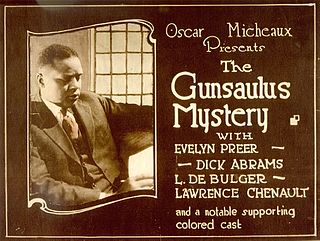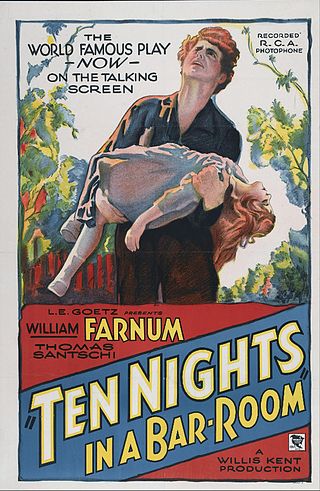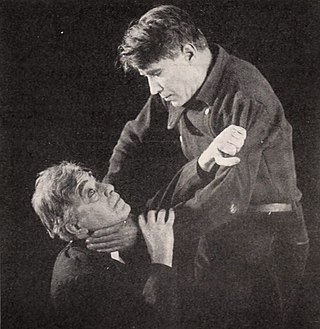
Oscar Devereaux Micheaux (; was an American author, film director and independent producer of more than 44 films. Although the short-lived Lincoln Motion Picture Company was the first movie company owned and controlled by black filmmakers, Micheaux is regarded as the first major African-American feature filmmaker, a prominent producer of race films, and has been described as "the most successful African-American filmmaker of the first half of the 20th century". He produced both silent films and sound films.

Body and Soul is a 1925 race film produced, written, directed, and distributed by Oscar Micheaux and starring Paul Robeson in his motion picture debut. In 2019, the film was selected by the Library of Congress for inclusion in the National Film Registry for being "culturally, historically, or aesthetically significant".

Evelyn Preer, was an African American pioneering screen and stage actress, and jazz and blues singer in Hollywood during the late-1910s through the early 1930s. Preer was known within the Black community as "The First Lady of the Screen."

The Scar of Shame is a silent film shot in the winter of 1927 and released in April 1929. It is a silent film melodrama featuring black actors and was written for a predominantly black audience. It premiered from April 13–17, 1929 in the M&S Douglas Theatre in New York City. Its second screening ran from April 15–20, 1929 at Gibson's Theatre, Philadelphia.
Gertrude Sanborn was an American journalist, short story writer, and novelist.

Lawrence Chenault was an American vaudeville performer and silent film actor. He appeared in approximately 24 films between years 1920 and 1934; most of his performances were in films directed by pioneering African-American filmmaker Oscar Micheaux. His brother, Jack Chenault, was also a film actor.

The Gunsaulus Mystery is a 1921 American silent race film directed, produced, and written by Oscar Micheaux. The film was inspired by events and figures in the 1913–1915 trial of Leo Frank for the murder of Mary Phagan. The film is now believed to be lost. Micheaux remade the film 1935 as Murder in Harlem.
The Conjure Woman is a 1926 silent film directed, written, produced and distributed by Oscar Micheaux. A race film featuring an African-American cast and catering to an African-American audience, it stars Evelyn Preer and Lawrence Chenault, with support from character actors Peter Verwayen, Alma Sewell and Sidney Easton. It is based on American writer Charles W. Chesnutt's 1899 short story collection of the same name. No print of the film has been located and it is presumed to be a lost film.
The House Behind the Cedars is a 1927 silent race film directed, written, produced and distributed by the noted director Oscar Micheaux. It was loosely adapted from the 1900 novel of the same name by African-American writer Charles W. Chesnutt, who explored issues of race, class and identity in the post-Civil War South. No print of the film is known to exist, and it is considered lost. Micheaux remade the film in 1932 under the title Veiled Aristocrats.
The Colored Players Film Corporation, also known as The Colored Players Film Corporation of Philadelphia, was an independent silent film production company based in Philadelphia, Pennsylvania. Primarily founded by David Starkman and Sherman H. Dudley in 1926, the film company for the most part made silent melodramatic films that featured all African American casts. During its brief time operating, the production company released four films, including A Prince of His Race (1926), a remake of Timothy Shay Arthur’s Ten Nights in a Bar Room (1926) with an all black cast, Children of Fate (1927), and finally The Scar of Shame (1929). Of the four films the company produced only Ten Nights in a Bar Room and The Scar of Shame remain extant. Shingzie Howard was one of its stars.
Ten Minutes to Live is a 1932 American film directed by Oscar Micheaux and starring Lawrence Chenault, A. B. DeComathiere, Laura Bowman, Willor Lee Guilford, and Tressie Mitchell. One of the characters is deaf and much of the dialogue was dubbed offscreen. The film is part of the collection of the Museum of Modern Art.

Ten Nights in a Bar-Room is a 1931 American Pre-Code film directed by William A. O'Connor. The film is a remake of a 1910 movie and follows the storyline in the 1854 novel, Ten Nights in a Bar-Room and What I Saw There by Timothy Shay Arthur.
Ten Nights in a Bar-room and What I Saw There is an 1854 novel written by American author Timothy Shay Arthur. The book is a temperance novel, written expressly to discourage readers from drinking alcohol. It was a commercial and popular success upon its release and was later adapted into other media.
Pearl Bowser was an American author, collector, television director, film scholar, film director, producer, filmmaker, independent distributor and film archivist. Along with her peers Mel Roman and Charles Hobson, Bowser researched and curated "The Black Film" retrospective at the Jewish Museum in 1970. This prompted a new wave of public interest into "exhibiting, producing, and engaging with African American cinema beyond borders". Most of her exalted career was spent traveling the globe in order to cultivate audiences for marginalized filmmakers. An example of her efforts, and also her most groundbreaking work, manifested in her research on "early-1900s Black film pioneer Oscar Micheaux". This research can be seen in her book on the first ten years of the career of Oscar Micheaux, an African-American who directed 40 "race pictures" between 1918 and 1940. She is thus credited for having helped rediscover some of Oscar Micheaux's rare surviving films. She is the founder of African Diaspora Images, a collection of visual and oral histories that documents the history of African-American filmmaking. Part of her journey included teaching young people film in the 1960s and 1970s.
The Spider's Web is a 1926 American film directed by Oscar Micheaux which stars Evelyn Preer. It was remade in 1932 as The Girl from Chicago.
The Broken Violin is an American silent film directed by Oscar Micheaux, released in 1928.

African American cinema is loosely classified as films made by, for, or about Black Americans. Historically, African American films have been made with African-American casts and marketed to African-American audiences. The production team and director were sometimes also African American. More recently, Black films featuring multicultural casts aimed at multicultural audiences have also included American Blackness as an essential aspect of the storyline.
Harry Henderson was an actor in theater and films in the United States. He made four films with the Colored Players Film Corporation. He was also cast in several Oscar Micheaux films and had a starring role in the film melodrama The Scar of Shame. He portrays a wealthy concert pianist in the film. He also had a lead role in the 1926 film The Prince of His Race.

Ten Nights in a Bar Room is a 1921 melodrama film directed by Oscar Apfel. The film is based on the novel of the same name by Timothy Shay Arthur.
The Midnight Ace is a 1928 American crime film. Abe DeComathiere, Mabel Kelly and Oscar Roy Dugas starred. The film was directed by John H. Wade for Swan Micheaux's Dunbar Film Company. Swan Micheaux was Oscar Micheaux's brother. Swan had worked for Oscar before a failling out over his management of finances. Swan left and formed the Dunbar film company but it only made this film.








